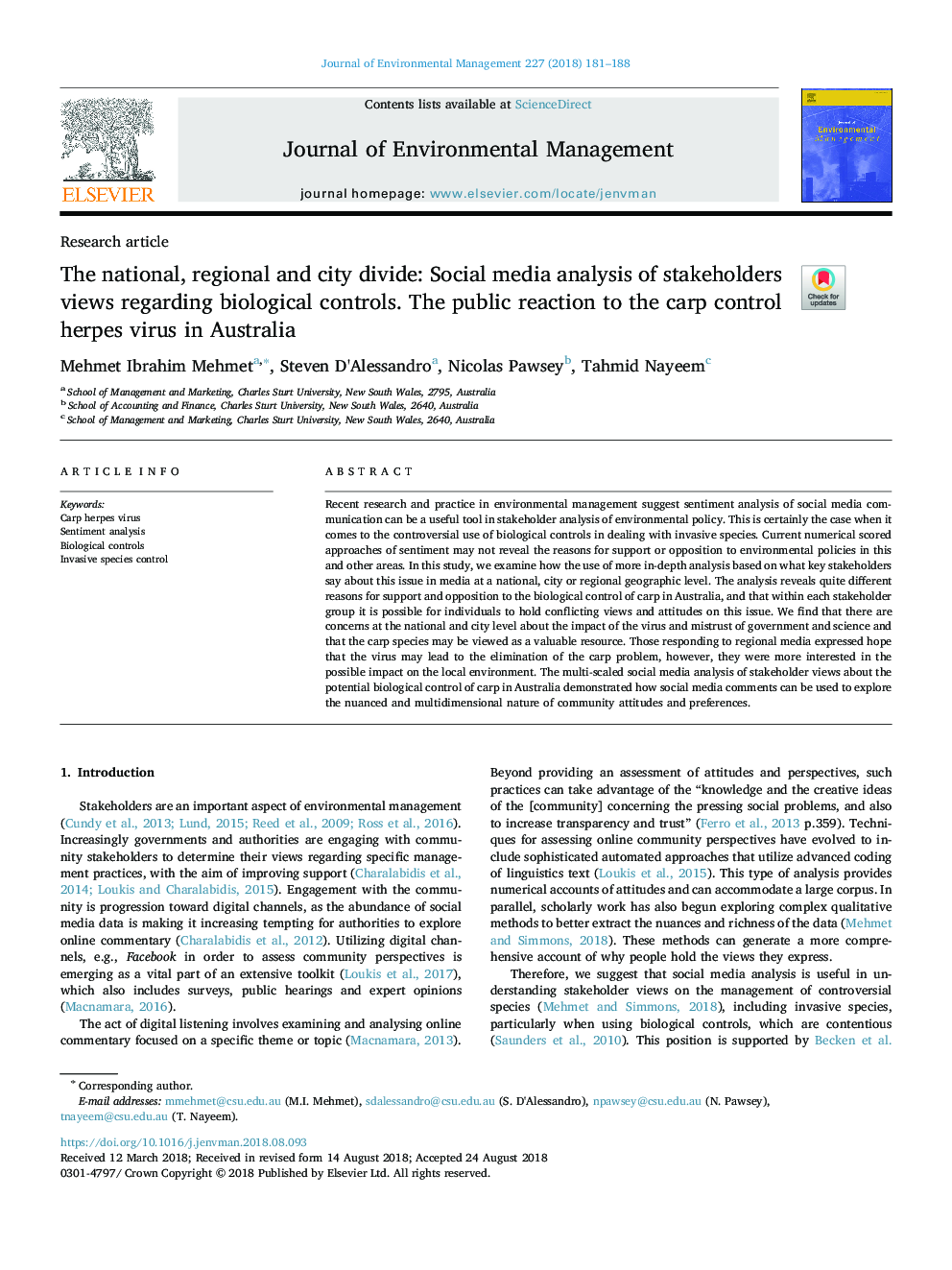| Article ID | Journal | Published Year | Pages | File Type |
|---|---|---|---|---|
| 10140611 | Journal of Environmental Management | 2018 | 8 Pages |
Abstract
Recent research and practice in environmental management suggest sentiment analysis of social media communication can be a useful tool in stakeholder analysis of environmental policy. This is certainly the case when it comes to the controversial use of biological controls in dealing with invasive species. Current numerical scored approaches of sentiment may not reveal the reasons for support or opposition to environmental policies in this and other areas. In this study, we examine how the use of more in-depth analysis based on what key stakeholders say about this issue in media at a national, city or regional geographic level. The analysis reveals quite different reasons for support and opposition to the biological control of carp in Australia, and that within each stakeholder group it is possible for individuals to hold conflicting views and attitudes on this issue. We find that there are concerns at the national and city level about the impact of the virus and mistrust of government and science and that the carp species may be viewed as a valuable resource. Those responding to regional media expressed hope that the virus may lead to the elimination of the carp problem, however, they were more interested in the possible impact on the local environment. The multi-scaled social media analysis of stakeholder views about the potential biological control of carp in Australia demonstrated how social media comments can be used to explore the nuanced and multidimensional nature of community attitudes and preferences.
Keywords
Related Topics
Physical Sciences and Engineering
Energy
Renewable Energy, Sustainability and the Environment
Authors
Mehmet Ibrahim Mehmet, Steven D'Alessandro, Nicolas Pawsey, Tahmid Nayeem,
